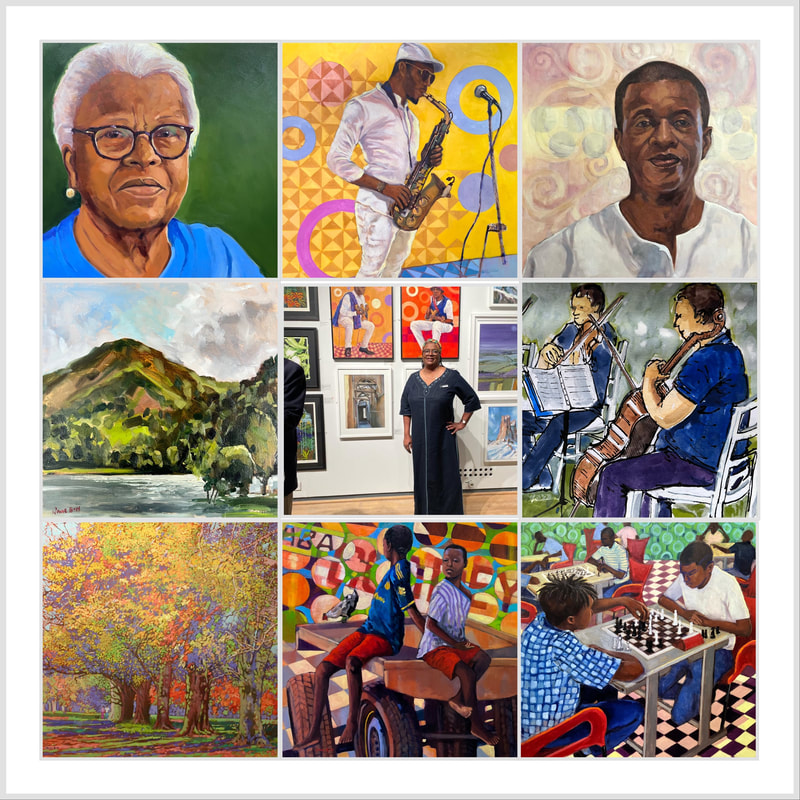|
Identity is a powerful force that shapes an artist’s work, especially when we make the decision to join the ranks of professional artists. Identity influences our perspective and sometimes it even confounds us. For me, this struggle has been particularly poignant as I’ve grappled with the question of whether I’m a contemporary African artist or an English contemporary artist having now lived in the UK for nearly 40 years.
Recently, during a course to help me hone my social media skills, I had to write my profile as an artist and this really got me thinking; is it about who I am as an artist, or is it about the type of art I produce? Growing up in Ghana, I was deeply connected to my African heritage, the vibrant colours, rich history, and diverse cultures were embedded in my identity. Art as I knew it at the time was in itself quite heavily influenced by European practice. Easel art, was still a relatively new concept and most of the influential Ghanaian artists can be traced back to a post colonial Ghana. Nevertheless, my early artistic expressions were heavily influenced by African art themes and motifs and I felt a strong sense of belonging to the African art scene. Life brought me to the UK, and new influences and the British culture began to seep into my creative consciousness. My subject matter started to evolve, taking on broader themes and incorporating a more eclectic palette. As I continued to create my art, I found myself at a crossroads. I questioned whether I could claim the title of contemporary African artist when my experiences and surroundings had evolved so significantly. At the same time I wondered if I could be considered an English contemporary artist when my roots held such a profound influence in my work. Rather than allowing myself to feel confined by the struggle to choose one identity, I decided to embrace both aspects. I realised that my unique perspective could bridge cultures and create narratives between both worlds. My journey as an artist has taught me that identity is not a static concept, but a dynamic evolving force spanning both cultures and this is a strength, not a limitation. Art has the power to transcend borders and create connections. Then came social media! The role of social media in reflecting this identity has become both a blessing and a challenge to me. On the one hand, it offers a platform to share our work with a global audience providing exposure that was once unimaginable. However, it also intensifies the pressure to define oneself within the constraints of categories and hashtags. Social media platforms almost demand that artists categorize themselves; too wide a diversity dilutes the audience range and forces us to choose sides in the battle of defining who we are as artists. As an artist grappling with identity, I’m learning to embrace the ambiguity that social media can’t capture. I’m learning to appreciate that the essence of my work lies in it’s ability to transcend categories and speak to a diverse audience. I know this does not fit in with the algorithms but I very often have to remind myself I am an artist, not a social media junkie. In a world where social media often equates success with viral trends and clear-cut identities, I’ve had to redefine what success means to me as an artist. It’s not about fitting into pre-defined boxes, it’s about staying true to my unique vision, and to use my art, diverse as it is - to spark conversations about identity and diversity. As an artist, do you often struggle with your identity? Are you constrained by social media when it comes describing your art? Do drop me a line in the comments below.
5 Comments
|
AuthorI love to paint and sketch and although predominantly a studio artist, I have discovered the joys of painting and sketching outdoors. Archives
May 2025
Categories |
Copyright Anne Blankson-Hemans 2025 - All Rights Reserved





 RSS Feed
RSS Feed